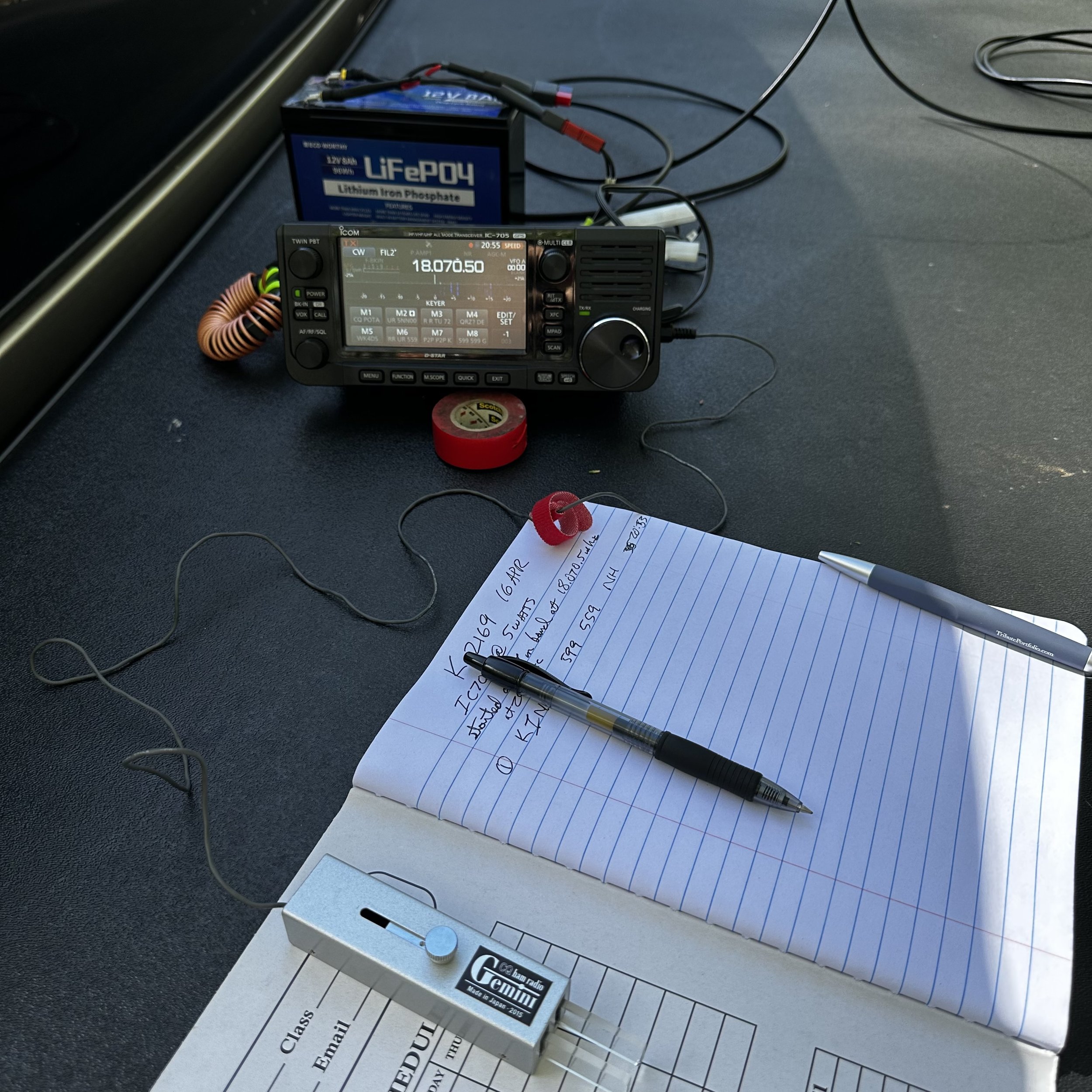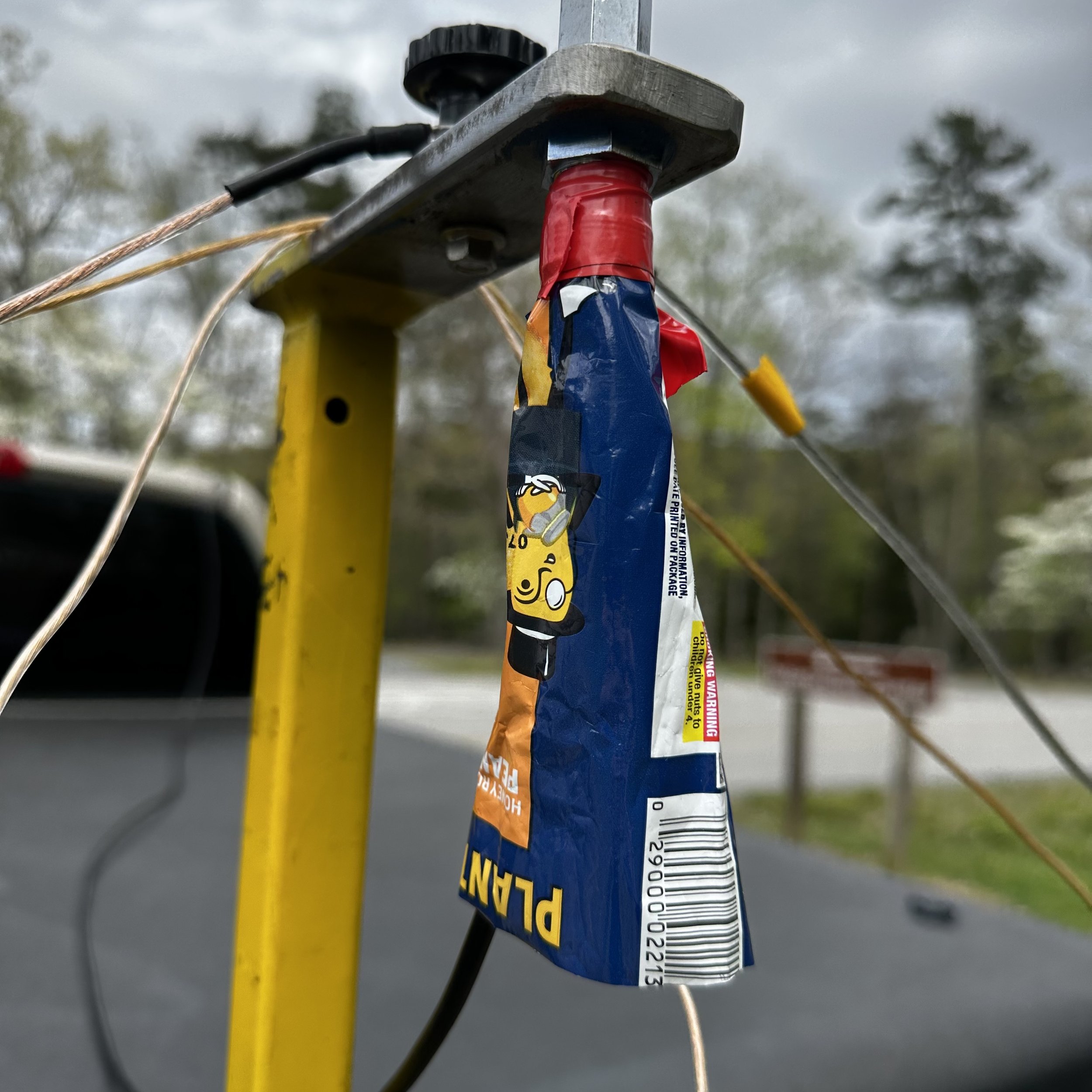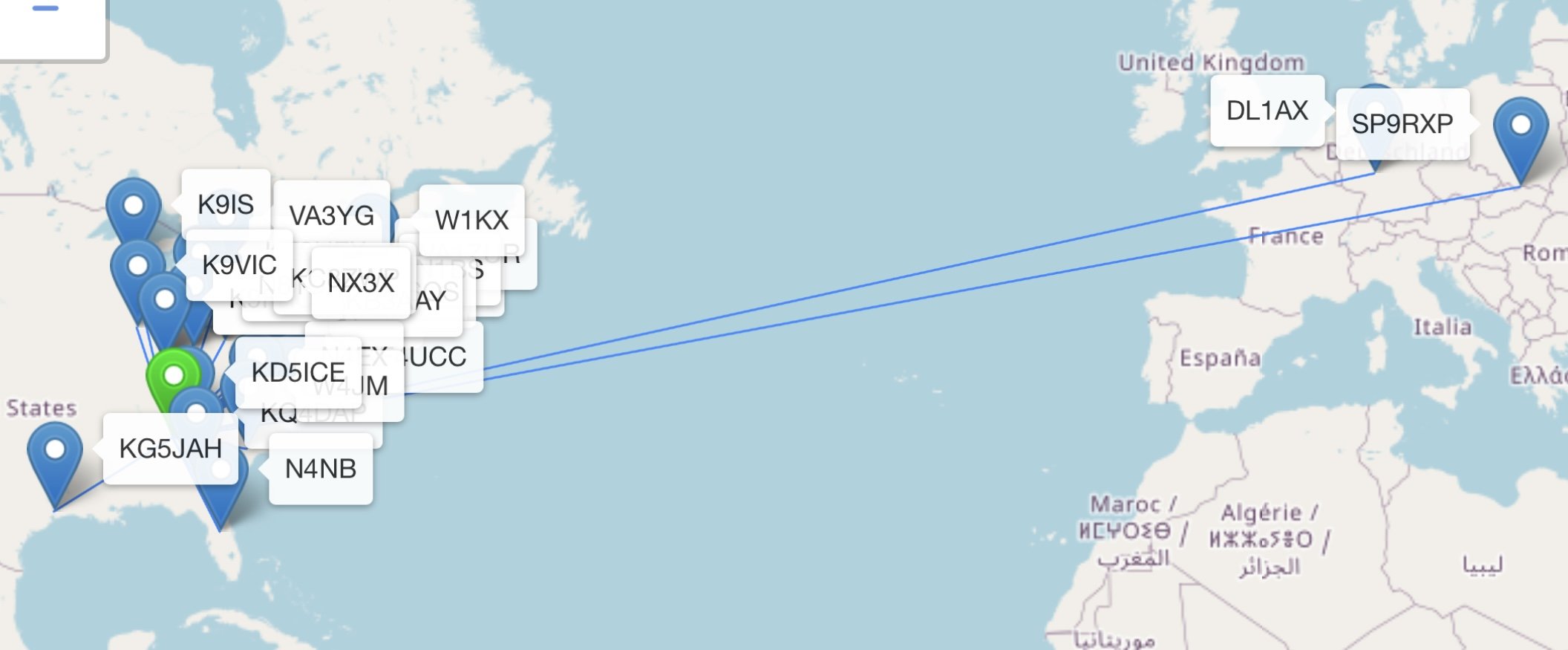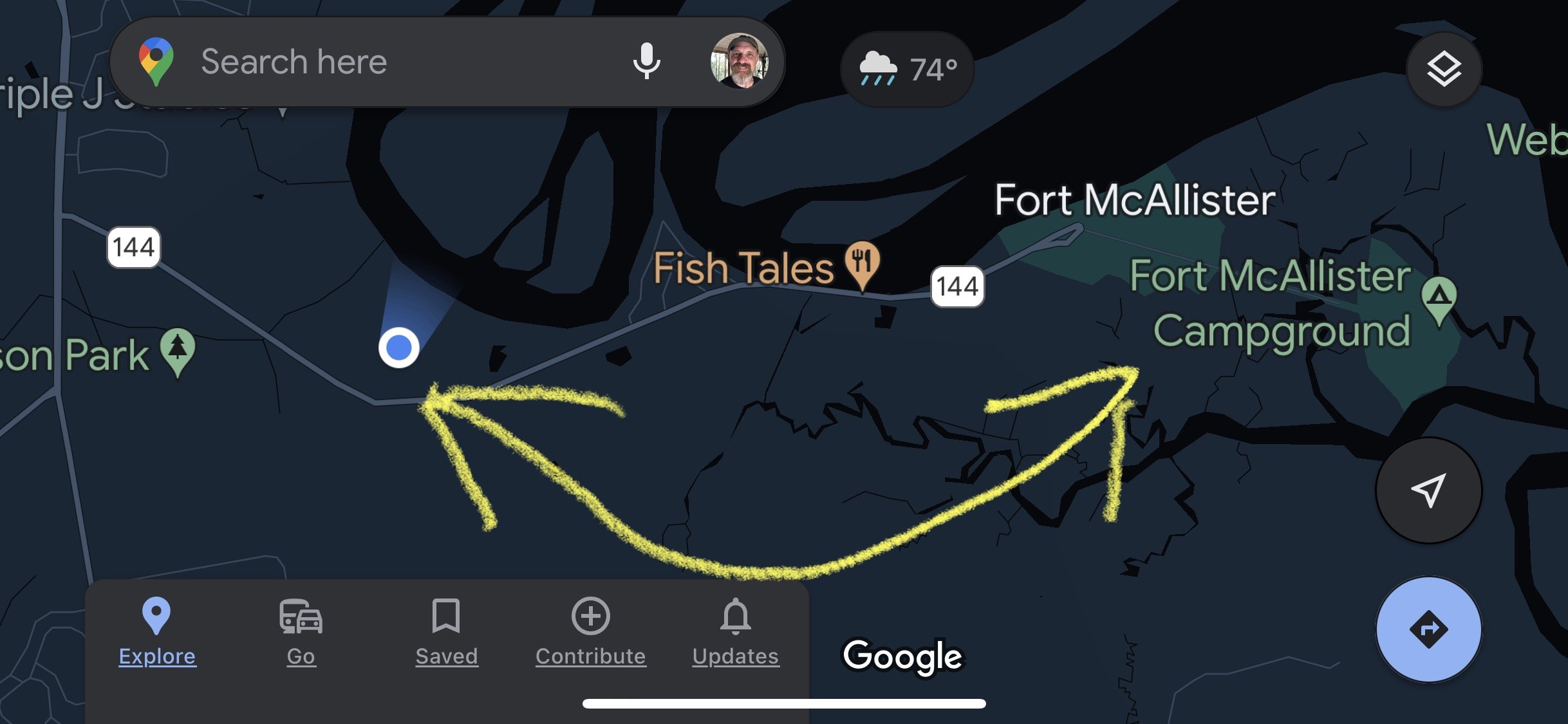The last couple of days has actually been good for my radio habit…errrrr…hobby. Yeah, hobby… lol.
Both were at K-2169 as I am working towards getting 100 activations at this park and it is close to home as well, so I can go play with my radios fairly easily here too. The new part about this trip is that I went to a different part of the park, this section is on the east side of the park and is a trail head for mountain bikers and hikers mostly. I knew I was fully in the park when I saw the boundary sign at the entrance to the parking lot.
These two photos show how convenient it was to setup here. The first photo shows the view from the road in front of the park with the boundary sign out front. It also shows the yellow electric gate behind it as well. The next photo shows my truck parked in the corner of the lot with the yellow gate in the foreground. It was pretty busy here too, there was a lot of people out riding as it was a Sunday and the weather was perfect.
Here lately I have been using the Icom IC-705 QRP radio as it is easy to use, has memory keying and METERS! I can actually confirm the SWR is good before just trying to load it and hoping for the best. Also note the common mode choke too as well as the 8aH battery behind it, I have been using this battery since last summer and it works wonderfully. I can activate at least 3 times with it before even needing to be charged. That is incredible! One other thing about the IC-705 that I like is that it has an external speaker. That is nice if I can setup on the truck bed cover like I did here so I don’t have to mess with my headphones.
Below is a problem I have not had before. The antenna was in the tree branches and I am certain that it was killing my signals. I moved the whole truck forward 2 feet and got out of the branches and immediately started making contacts. So a note to myself is that I don’t need to let my hamsticks touch the tree limbs when I setup in a park…
17 meters has been crazy lately, as in this contact to Italy with 5 watts. I was weak to him, but he heard me! He probably had a tri-bander or a dedicated 17 meter Yagi pointed my way, but I don’t know…
Once I switched to 20 meters the signals were much stronger and I quickly secured the activation and was able to wrap it all up and be back on the road in just under an hour. Not bad for a guy with a few hamsticks and 5 watts of power…
The next activation happened 2 days later and this time I was also only able to stay for about an hour. So this time I wanted to see just how much I could trim off the setup and go full on minimalist with the activation this time. The weather was nice so I didn’t even have to run the coax into the cab of the truck. As you can see, this time I used the internal battery on the IC-705 as the radio will run 5 watts when using this battery anyway and it was super fast this way! I could have probably left the common mode choke off as well but I liked knowing it was there protecting the radio…
I bought a pack of various BNC adapters off of Amazon and here is the male to male coupler connecting the coax to the choke. This makes setup of the cable to the antenna a breeze.
Here is another time saving item I used today, instead of both radials, I used just one of them and stayed on 20 meters the whole time to eliminate the time needed for band changes. It seems to work at about 85% as good as both radials so it gets the job done but if I am not in a hurry I will deploy both radials as it just seems to work better.
All of the strike thru partial QSOs are from what I can only explain as strange band conditions. It was like the band would be fully turned on one minute then like a switch it was gone the next. I would try a bunch of times to get them back but finally figured out the band was dead to that area and had to move on. It was really strange how it kept happening too. I mean they would be LOUD and then gone… Most likely it was them listening for me as I was QRP and the reports are showing not so great reports when I did get contact. So I am guessing I just faded into the noise floor on their end to be perfectly honest about it.
All in all, it was still great to get a coup[le of activations in and have some fun on the air at the same time. Thanks for reading along about my exploits.











































































































